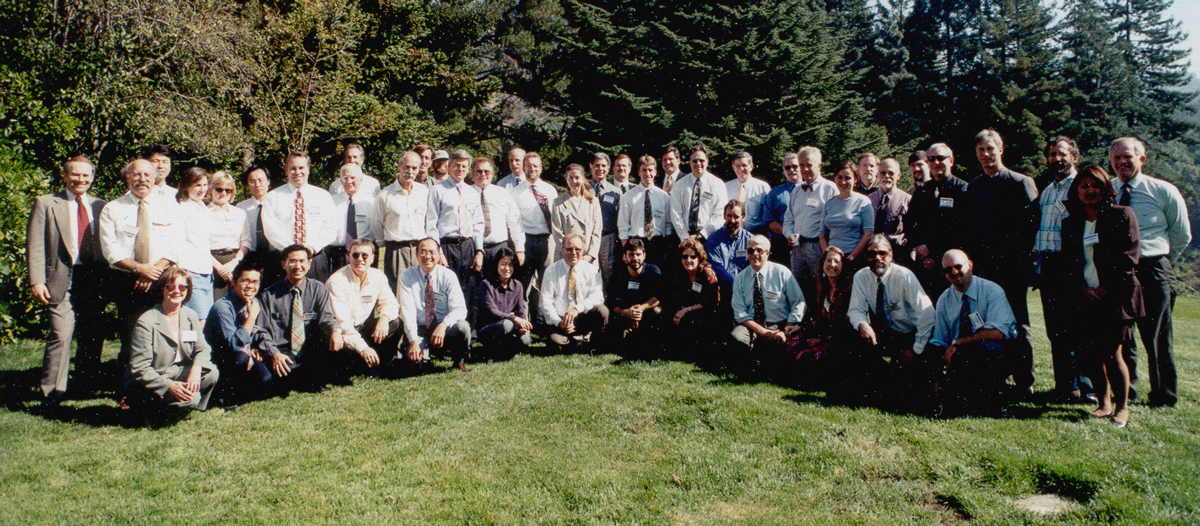Twenty years ago this spring, Berkeley faculty and research staff hosted CBE’s inaugural advisory board meeting with representatives of ten founding partner firms. This new consortium, formed under the auspices of the National Science Foundation Industry/University Research Program, created the initial roadmap for research that has continued for two decades, yielding a broad and valuable body of knowledge, innovation, publications, and industry impacts. (The image above is from a 1999 meeting.)
Since its launch, CBE has seen its membership, research team, and reach grow tremendously. We now have close to 40 industry members who commit time and resources to support and guide our research. (Of the founding members, ARUP and the U.S. General Services Administration, are still with CBE, and many partners have been engaged for ten years or more.) These partners represent many perspectives from across the spectrum of the commercial building sector, and bring significant expertise and insight to bear on our work. They work with us as advisors, as research team members, and as co-authors.
Our research team now consists of nearly a dozen full-time faculty and staff, supported by a number of post-doctoral scholars, graduate students, and visiting scholars from around the world who work with us with the support of their universities. Our network of collaborators includes people from universities and research centers around the world, and from many companies and non-profit organizations, including several who have teamed with us to win multimillion-dollar-awards.
Looking back over these past two decades we see that some of our most important accomplishments were first envisioned at that first meeting back in 1997. For example, a project on the performance of underfloor air distribution (UFAD) plenums grew to a decade-long UFAD research program that created design tools and guidance for the then-nascent technology, concluding with an ASHRAE Design Guide on UFAD Systems (two editions). The research approach developed for UFAD — combining laboratory, simulation and field study methods — is an approach we are now using on our four-year study on Optimizing Radiant Systems.
Our proposal at that inaugural meeting for using web-based systems to evaluate building performance has led to CBE’s Occupant Survey, which has been used in over 1000 buildings, and has resulting in numerous findings and papers, providing improved understanding of key concerns of occupants, and areas on which our industry needs to focus. Our early work on “task-ambient” conditioning systems has led to a range of research and innovations we have since dubbed Personal Comfort Systems, a rewarding area of focus for our team. This work also led to the development of many thermal comfort research topics, including the development of the Advanced Thermal Comfort Model, and our team is a globally recognized leader in thermal comfort research.
As we reflect on our past, it’s apparent that much of our success comes from CBE’s consortium partners, who have shaped the direction of our work, and worked to adopt and extend the results of these efforts. Since CBE’s inception, our work has led to changes in codes and standards that can facilitate the creation of comfortable and energy-efficient buildings, and has been included in over 350 reports and peer-reviewed papers. As we reach our twentieth anniversary, our organizational maturity and resources are assets for meeting the challenges of today’s political outlook, as we build on our strengths and forge new directions.

